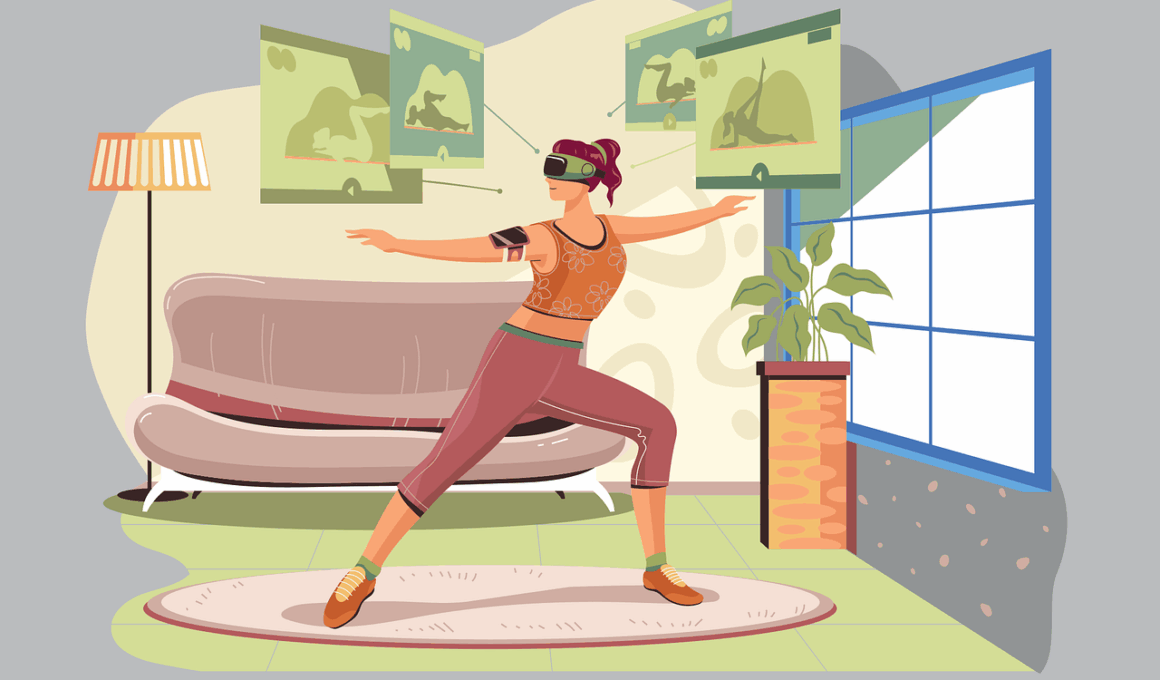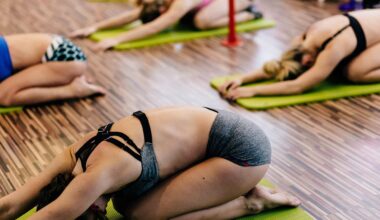Using Virtual Reality to Motivate Seniors to Exercise
As our society ages, physical fitness for seniors becomes increasingly crucial. It improves health, enhances well-being, and provides social interaction opportunities. However, motivating seniors to adhere to workout routines can be challenging. Addressing this issue, researchers have turned to modern technological advancements. Among these, virtual reality (VR) has emerged as a transformative tool, capable of making exercise an engaging experience for older adults. VR creates immersive environments, allowing users to escape into worlds that can stimulate both body and mind. This approach not only enhances enjoyment but addresses common barriers, such as mobility or accessibility limitations. For many seniors, traditional workout routines can feel monotonous and uninspiring. VR breaks this cycle by enabling them to explore various environments—like hiking in serene landscapes or playing games that require physical movement. Studies have shown that seniors using VR technologies demonstrate increased motivation and exercise frequency, leading to better fitness levels overall. Utilizing VR to merge play with exercise represents a promising trend. It could fundamentally change how seniors approach their health and fitness journeys, encouraging them to remain active and engaged in their golden years.
The Benefits of VR in Senior Fitness
Virtual reality provides numerous benefits specifically tailored for seniors embarking on fitness journeys. One of the primary advantages of VR is its ability to create engaging, interactive experiences that capture interest and motivate activity. When seniors can immerse themselves in simulated environments, it becomes easier to stay committed to their fitness routines. Incorporating movement into playful scenarios relieves stress and anxiety associated with traditional exercise regimes. VR helps bridge the gap for seniors who may lack confidence in traditional fitness settings. Comfortable in their private space, seniors can build foundational skills before engaging in community classes. Another significant benefit is the social interaction facilitated by VR technologies. Many VR platforms allow multiple users to engage simultaneously, fostering a sense of community among those who might otherwise feel isolated due to age or mobility issues. These virtual interactions can lead to new friendships, enhancing mental well-being. Additionally, VR programs can often be tailored to individual abilities and progressions, ensuring that seniors work out at their pace. This personalization encourages a sense of achievement and promotes long-term adherence to fitness schedules, ultimately supporting healthier lifestyles.
Despite the many advantages, challenges remain in implementing VR fitness programs for seniors. Potential obstacles include limited access to technology and the need for training to use VR systems effectively. Many seniors may feel overwhelmed by new technologies or lack the necessary equipment, such as VR headsets. Additionally, there needs to be a comprehensive understanding of specific health conditions that might affect how seniors can use VR systems. Careful attention must be paid to design programs that suit diverse users, ensuring comfort and safety. Moreover, fitness developers should create sessions that account for seniors’ varying physical capabilities. Selecting appropriate content is crucial to appealing to the target demographic. Established franchises that appeal to an older audience should feature safe, enjoyable exercises. While there is potential for VR to revolutionize senior fitness, collaboration between technologists, healthcare professionals, and fitness experts is paramount. By pooling insights and experiences, effective strategies can emerge that adequately educate seniors on effectively using this technology. The ultimate aim is to provide seniors with immersive experiences that promote physical activity while prioritizing health and safety.
Real-Life Examples of VR Fitness Programs
Numerous programs have successfully harnessed the power of VR to motivate seniors and promote fitness. One noteworthy example is SilverFit, which focuses on creating interactive, engaging environments for seniors. Their VR fitness systems include various scenarios, such as guided yoga in tranquil settings or cycling through picturesque scenery. Such experiences not only motivate physical activity but also allow users to reminisce about pleasant memories tied to certain landscapes or activities. Another notable initiative is the VRHealth, utilizing advanced VR solutions to automate physical therapy and rehabilitation for seniors. By using enjoyable, gamified experiences, they ensure that older adults remain active while recovering from injuries or surgeries. A growing number of retirement communities have initiated VR gaming clubs focused on everything from dance avatars to exercise challenges. Their success showcases how a blend of fun and fitness inspires seniors to stay physically active. These implementations show that through innovative VR approaches, it’s possible to engage senior populations meaningfully and effectively. As technology progresses, the potential for new and creative VR fitness solutions for seniors will only increase.
The impact of VR on senior fitness extends beyond simply improving physical health; it promotes mental well-being as well. Engaging in enjoyable activities can significantly enhance a senior’s mood, providing necessary emotional lifts. Incorporating music or a community aspect in virtual exercise can evoke positive feelings, making activities less solitary. As seniors engage with their peers in VR environments, a sense of belonging can alleviate feelings of loneliness or isolation often associated with aging. Studies highlight the connection between sustained physical activity and improved cognitive function in seniors. As they remain mentally active through engaging virtual workouts, the cognitive advantages become increasingly attractive. Enhanced memory and focus can arise from complex movements and decision-making experienced during VR exercises, preserving overall brain health. Moreover, VR environments can simulate various physical challenges, fostering resilience and adaptability. This increases the confidence and capability of seniors to tackle real-life scenarios effectively. The interactive nature of VR workouts provides ample opportunities for skill acquisition, leading to improved day-to-day activities. All these aspects create a well-rounded approach to healthy aging, emphasizing the importance of fitness both physically and mentally.
Challenges and Future Directions
Looking ahead, the future of VR and senior fitness is promising yet presents several challenges that need addressing. Ensuring accessibility for all seniors, including low-income individuals and those in remote areas, remains paramount. Collaborations between governmental agencies and technology companies may facilitate the availability of affordable VR devices. Furthermore, it’s crucial to educate seniors on the benefits of using VR technology for fitness. Workshops, free trials at community centers, and one-on-one tutoring could help overcome fears associated with technology. Continuous research should focus on understanding seniors’ unique needs and preferences. Developers must remain sensitive to the evolving landscape of senior health to create relevant materials. Incorporating feedback from real users can lead to tailored programs that resonate more closely with active aging. As machine learning and artificial intelligence evolve, adaptive fitness programs may come into play, helping customize experiences based on participants’ progress. Lastly, ongoing evaluations will help gauge the effectiveness of VR initiatives on seniors. By addressing these challenges and embracing opportunities, the future of VR fitness for seniors holds great potential, transforming today’s engagement into tomorrow’s vitality.
In conclusion, utilizing virtual reality to motivate seniors to exercise presents an innovative solution to pressing challenges in senior fitness. The integration of fun, engaging environments with physical activity can dramatically improve motivation levels. As seniors embrace technology, they can redefine their fitness journeys, breaking away from traditional molds. Enhanced social interaction, emotional well-being, and cognitive health are among the valuable outcomes achievable through VR that go beyond mere fitness. As barriers are minimized and seniors better understand virtual technology’s potential, embracing VR as a fitness tool will likely expand. The necessity for collaboration between technology developers, healthcare professionals, and fitness experts cannot be overstated in this endeavor. Working together to address concerns surrounding accessibility, usability, and safety will ensure successful implementations of VR for seniors. Ultimately, the fusion of technology and wellness represents a new frontier in fitness, providing older adults with vibrant experiences to remain active, fit, and socially connected. Aiming for positive health outcomes, we can undoubtedly look toward a future where fitness through VR becomes an essential aspect of senior living. The journey toward revitalized living begins now.
With such a diverse array of opportunities available, the choice ultimately lies within each senior to take the initial step. Embracing virtual reality encompasses more than just a fitness routine; it represents a holistic approach to well-being that touches on multiple aspects of health. Encouraging self-exploration and ongoing adaptation can lead to an engaged lifestyle filled with joy. As technology continues to innovate, there will always be new paths unfolding. Seniors have an exciting future ahead of them as they venture into a world equipped with possibilities. Exploring how to leverage societal changes to embrace healthy aging is more important than ever. Society must rally to support older adults in their journeys by providing access to the right tools and environments. By doing so, older adults can share experiences through new modalities, encouraging them to nourish their physical and mental health. Active participation in fitness can weave a tighter social fabric, thus empowering senior individuals and removing barriers that hinder progress. With the right resources, enthusiasm, and a supportive community, seniors can embark on fulfilling adventures that invigorate both mind and body alike.


